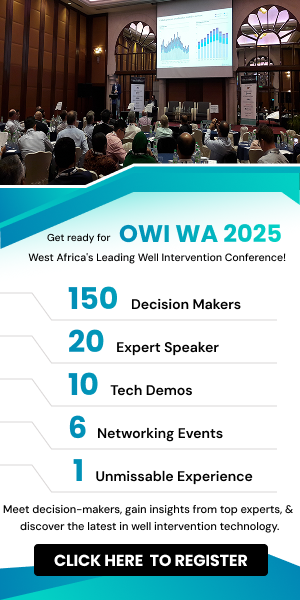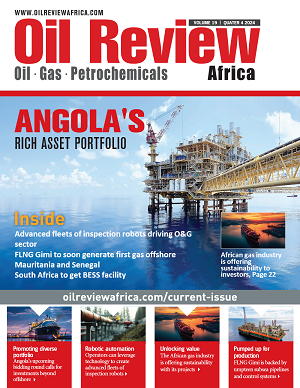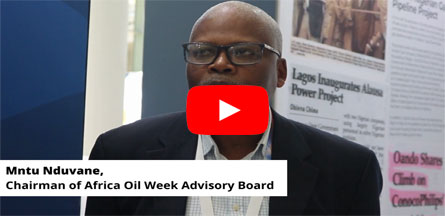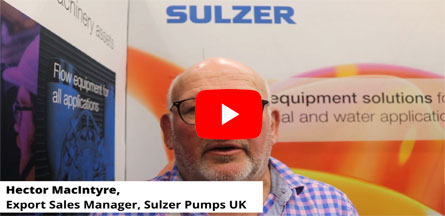Invictus Energy Limited has announced that the Zimbabwe Environmental Management Agency (EMA) has approved the Environmental Social Impact Assessment (ESIA) for pilot production activities at the Cabora Bassa Project
Pilot production activities include the Eureka Gold Mine Gas-to-power Project and incorporates gas extraction, liquefaction, and transport from the Mukuyu gas field, as well as future extraction operations.
The approval provides a clear pathway for the commercialisation of gas resources from the Cabora Bassa Basin. Following the approval, the Company was issued with License No: L10000062291.
Invictus Energy managing director Scott Macmillan said, “The ESIA approval is a critical milestone for Invictus, and paves the way for the future development of the Mukuyu gas field and broader exploration license areas. We will now finalise pilot production planning, secure all necessary permits, and advance discussions with additional potential offtake partners.
Invictus remains committed to unlocking Zimbabwe’s gas potential and delivering long-term value to shareholders and the broader region.
I look forward to providing further updates as we advance these pilot production activities.”
Gas-to-power projects
The ESIA approval is a pivotal step towards the commencement of pilot production activities, including the Eureka Gold Mine gas-to-power project. This project is being developed in collaboration with Dallaglio (owner of Eureka Mine) and Himoinsa SA (onsite power generation provider to Eureka), leveraging Mukuyu’s gas resources to supply reliable and cost-effective power to the mine.
Invictus and Himoinsa SA have been actively engaging with various technology providers for gas processing, liquefaction, and logistics solutions to feed into the feasibility study, which is progressing in tandem. These engagements are aimed at identifying optimal technologies to maximise efficiency and commercial viability for the pilot production phase and subsequent large-scale development.
Initial Eureka gas-to-power project feasibility study results indicate a high look-through gas price exceeding US$10/GJ for gas-fired power generation, based on current grid tariff rates. This underscores the economic viability of the Mukuyu gas field as a strategic energy source for power generation in Zimbabwe and the broader region.
The ESIA expands on the initial 2019 assessment, which was one of the most extensive environmental studies ever undertaken in Zimbabwe. The 2019 study included rigorous field surveys and baseline measurements across multiple disciplines, including hydrology, ecology, environmental and archaeological assessments, hydrogeological and soil surveys, as well as socioeconomic and community consultations. Key stakeholders engaged during the assessment process included local leaders, relevant government ministries, and government extension offices.
The ESIA approval reinforces Invictus Energy’s commitment to responsible and sustainable resource development, ensuring compliance with stringent environmental and social governance (ESG) standards while advancing Zimbabwe’s domestic energy security.
In The Spotlight
Vitol has entered into an agreement with Eni to acquire interests worth approximately US$1.65bn comprising Eni's significant oil and gas assets in Ivory Coast and the Republic of Congo
This is a diverse portfolio including not only producing assets but also blocks that are currently under exploration, appraisal and development. One of the most valuable assets that Vitol will be investing in is the Baleine project in Ivory Coast, with a 30% participating interest after Eni's 77.25% ownership interest.
It will be acquiring a 25% participating interest in the mega gas initiative in the Republic of Congo known as the Congo LNG project. Eni has a 65% participating interest in the project.
These agreements further solidify Eni and Vitol's already established partnership in the OCTP and Block 4 projects in Ghana.
While this transaction adds to Vitol's long-running upstream presence in West Africa, besides also a portfolio of infrastructure and downstream related investments, it rebalances the portfolio for Eni who is following a dual exploration model. It comes as part of the major's strategy to optimise upstream activities.
Vaalco Energy has also recently reorganised its portfolio in West Africa.
West Africa has also seen enhanced rig activity, with Shelf Drilling and Borr Drilling announcing contracts since late last year.
Set on accelerating the spud date for Prospect I onshore Namibia, ReconAfrica has completed initial surveying activity, and is now conducting debushing
This will soon be followed bydemining before the spudding process can be initiated by the second quarter of 2025.
Prospect I is targeting 365 million barrels of unrisked and 32 million barrels of risked prospective light/medium oil resources, or 1.7 trillion cu/ft of unrisked and 126 bn cu/ft of risked prospective natural gas resources, on a 100% working interest basis, based on the most recent prospective resources report prepared by Netherland, Sewell, & Associates, Inc. (NSAI), an independent qualified reserves evaluator . Prospect I is noted as location 63 in the NSAI report.
"We have made great progress in getting Prospect I ready to drill and , as a result, we are accelerating the spud date into Q2 2025. Our in-country teams have commenced community engagement, surveying, debushing and demining activities, which will be followed by construction of a 10 kilometre road and drill pad site.
"Prospect I is one of the largest mapped structures in the Damara Fold Belt, is well imaged from 2D seismic, and demonstrates a four-way dip closure in which we expect to penetrate over 1,500 metres of Otavi reservoir. Drilling at the Prospect I location has been significantly derisked by the results of our first Damara Fold Belt well, Naingopo, which encountered reservoir in the Otavi carbonates, hydrocarbon shows and oil to surface. We are excited to drill this follow-on exploration well as we continue to look to unlock the significant hydrocarbon potential of the Damara Fold Belt," said Brian Reinsborough , President and CEO.
Renewable energy solutions provider, Scatec ASA, has signed a 25-year US$-denominated corporate power purchase agreement (PPA) with Egypt Aluminium for a 1.1 GW Solar PV + 100 MW/200MWh BESS project in Egypt backed by a sovereign guarantee.
Egypt Aluminium exports approximately 60% of its production to Europe. This solar PV + BESS project will be instrumental for Egypt Aluminium’s ambition to decarbonise its aluminium production, and to meet EU’s Carbon Border Adjustment Mechanism (CBAM) requirements which will be introduced in 2026.
The key next steps for the project are to work with the relevant authorities to allocate land, finalise grid connection and secure financing, and Scatec targets to reach financial close and start construction within the next 12 months.
“This is another testament to Scatec’s position as one of the leading renewables companies in Egypt. It is a groundbreaking project as it is the first utility scale PPA in the country with an industrial offtaker. I would like to thank all parties involved for making this happen, especially our partners at Egypt Aluminium. Further, our team has shown great persistence and creativity in securing this agreement and bringing new solutions to the market,” said Scatec CEO Terje Pilskog.
The estimated total capital expenditure for the solar PV + BESS project is approximately USD 650 million which will be funded by approximately 80% non-recourse project debt, and the remainder by equity from Scatec and partners. Scatec owns 100% of the project but is targeting to reduce its long-term economic interest by inviting additional equity partners. Scatec will be the designated EPC service provider, with an EPC share of approximately 90% of total capex, as well as asset manager (AM) and operations and maintenance (O&M) service provider.
Offshore engineering solutions provider, Aquaterra Energy, has entered a multi-million-dollar, multi-year contract with Intrepid Energy Limited to deliver a bespoke subsea well intervention equipment package for a project in Nigeria
Aquaterra Energy’s turnkey well access package will enable IEL to conduct intervention operations across multiple mature oil wells in the region, supporting enhanced reservoir production.
The contract includes the supply of a complete seabed-to-surface intervention system and package, spanning from the subsea tree to surface intervention equipment. Key components include Aquaterra Energy’s TRT tieback tooling, which provides production bore and annular access, a lightweight well pressure control system, and an ISO 13628-7 qualified open water intervention riser with an integrated tensioning system. In addition to equipment provision, Aquaterra Energy will also deliver ongoing offshore engineering support throughout the project.
The 7- 3/8” lightweight well access solution, has been specifically engineered for deployment from jack-ups and lift boats. This innovative approach offers a cost-effective and operationally efficient alternative to floating vessels, reducing intervention costs while maintaining high safety and performance standards.
Andrew McDowell, Delivery Director at Aquaterra Energy said, "Our expertise in offshore engineering allows us to develop tailored intervention solutions that address the operational challenges of subsea well access. This system has been engineered for efficiency, ease of deployment, and safety, helping IEL optimise intervention activities across Nigeria while reducing costs. By delivering a complete, integrated package, we are simplifying complex operations and enabling operators to maximise production potential.”
Engr Seun Alonge, CEO at Intrepid Energy Limited said, “Working with Aquaterra Energy marks a significant step forward for our intervention operations in Nigeria. Their specialised technology enhances our ability to execute intervention programmes efficiently, maximising performance across our assets. By combining Aquaterra’s technical expertise with our deep understanding of the local operating environment, we’re confident this collaboration will enhance production outcomes and create lasting value for our operations in the region.”
The project is set to support intervention operations over multiple years, with Aquaterra Energy providing ongoing technical expertise, with a dedicated team of engineers providing ongoing service support throughout the project.
George Morrison, CEO at Aquaterra Energy, "Delivering reliable and efficient well access solutions for shallow water subsea operations is central to how we support offshore operators. This collaboration with IEL reinforces our commitment to providing cutting-edge engineering solutions that enhance efficiency and reduce operational costs. With West Africa playing an important role in the global energy sector, we’re proud to continue supporting its offshore industry with our expertise and innovative technologies.”
Norwegian seismic firm TGS has completed reprocessing work on data that it hopes will spur renewed interest in Angola’s forgotten deepwater Block 16
The company has announced that it had finished work on the Block 16 GeoStreamer MC3D seismic dataset in the Lower Congo Basin, in partnership with Agência Nacional de Petróleo, Gás e Biocombustíveis (ANPG).
Exploration in the deepwater Lower Congo Basin has experienced a resurgence in recent years, TGS reported, with numerous significant discoveries being made and rapidly brought on stream.
"This 3,684-sq-km rejuvenation project utilises modern depth processing workflows to deliver enhanced imaging beyond the original data, enabling detailed evaluation of deeper target plays in both post-salt and pre-salt sections,” it said in a statement.
Angola’s Block 16 has remained largely under explored since the early 2010s, however, with the most recent exploration well drilled in 2013. Until recently, publicly-known oil and gas discoveries within Block 16, in the latest dataset, were limited to the Bengo (1994) and Longa (1995) Upper Miocene finds in the northern section.
However, TGS said that a recent re-evaluation of wells in the Lower Congo Basin has identified oil recovery from Upper Miocene reservoirs in the southern part of the survey area. The survey also provides partial coverage of the field, a marginal field development opportunity currently being marketed by ANPG.
Discovered in 2003, Tchihumba contains hydrocarbon-bearing zones within Upper Miocene, Lower Miocene and Oligocene sands, with recoverable volumes estimated at approximately 136mn barrels.
Additionally, the Lumpembe-1 oil discovery on Block 15/06, drilled in 2023 and currently undergoing development studies, falls within the survey’s coverage.
“TGS is very pleased to continue our support of exploration in this region with our high-quality seismic data,” said David Hajovsky, executive vice president multi-client, TGS. “These accumulations, along with the proximity of significant neighbouring discoveries, present strong opportunities for future exploration success.”
Other West African projects TGS has completed recently include an enhancement of its Fusion 3D seismic dataset offshore Sierra Leone, focusing on the Vega prospect.
Recent discoveries in South America have intensified interest in this region, TGS stated late last year, positioning Sierra Leone as a promising new exploration frontier.
“With growing interest from international oil companies and independents, the Fusion 3D data comes at a crucial time.”
TGS also signed an agreement last year to enhance datasets in Mauritania with the Ministère du Pétrole, des Mines et de l’Énergie, strengthening its position as the sole provider of multi-client subsurface data in the country.
Read more offshore Angola news here:
Red Sky Energy signs risk service contract on Angola Block 6-24
Cabgoc's Sanha project achieves first gas offshore Angola
Sequa Petroleum to acquire interests in multiple blocks in Angola
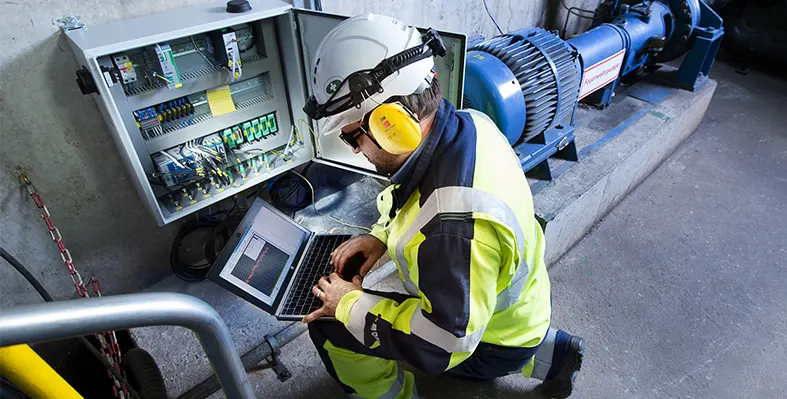
The service will address the growing demand for industrial energy efficiency. (Image source: Sulzer)
Sulzer has launched an energy efficiency and carbon reduction service called Sulzer Energy Optimisation Service to upgrade the standards of centrifugal pumps across their lifecycle for energy intensive industries such as power generation, oil and gas, chemicals and water desalination
This service will address the growing demand for industrial energy efficiency with access to digital analysis, machine learning and ongoing monitoring to reduce carbon emissions, enhance reliability, and reduce energy costs. A 1% increase in global pump efficiency would save around 59TWh of electricity – equivalent to New Zealand’s annual power needs; some pumps’ efficiency could be increased by as much as 20-30%.
Ravin Pillay-Ramsamy, services division president at Sulzer said, “Inefficient and unreliable pumps cost operators in the industrial sectors millions of dollars in unnecessary downtime, energy costs and carbon emissions every year. Sulzer Energy Optimisation Service offers a comprehensive solution that tackles this inefficiency – from identification through to improvement and monitoring.
“A pilot customer in Spain will now save €1 million in energy costs and over 2,300 tonnes of carbon dioxide a year as a result of energy optimisation improvements identified by the Service. By rerating five pumps, energy efficiency increased from 72% to 83% saving the operator 5,000MWh in electricity every year.”
Consisting of four steps, an initial pump energy audit identifies areas of inefficiency with Sulzer’s proprietary calculator – PumpWise – outlining the potential energy, carbon and monetary savings.
A tailored proposal is generated by Sulzer’s expert team presenting a range of options to return the pump to run at its best efficiency point through an engineered retrofit, with varying techniques such as hydraulic re-rates, specialised coatings, wear clearances and more. Each option weighs operational costs, investment, downtime, payback and efficiency guarantees. The upgrades are then implemented with support from Sulzer’s established retrofit team which has delivered more than 4,000 retrofit projects globally since its setup in 2010. The team is supported by a network of more than 120 service locations globally.
Following retrofit, Sulzer offers a performance agreement to maintain optimised reliability and efficiency. This includes access to Blue Box, Sulzer’s proprietary machine learning technology which turns pump performance data into actionable insights.
Pillay-Ramsamy said, “For operators who are constantly challenged to do more with less, making energy efficiency improvements is a win-win. With pumps accounting for 20% of the world’s electricity demand, we want to offer a streamlined, futureproofed way for customers to improve their energy efficiency regardless of their pump OEM.
“To do so, we’ve combined the competence of our people and longstanding engineering expertise with our proprietary innovations and wrapped them in a collaborative and customer-centric approach. Altogether we believe this solution creates a new best practice standard for pump operation that goes above and beyond in supporting operators to remain future-ready.”
The 4000km-long Trans-Saharan Gas Pipeline (TSGP) will undergo a feasibility study update from international energy consultancy, Penspen, which will gauge the regional gas market in terms of economic and financial aspects to make a cost estimation
There will also be environmental and social evaluation, including legislation and consultation reviews, risk analysis, and development of scope of work for the front-end engineering design (FEED).
Jointly sponsored by the Nigerian National Petroleum Company (NNPC) Limited (Nigeria), SONATRACH (Algeria) and SONIDEP SA (Niger), the TSGP runs from Nigeria to Algeria. The project will be able to supply up to 30 bn cu/m of natural gas across West and North Africa annually, before it goes to European markets.
Arun Behl, Penspen’s sales and marketing director (Middle East & Africa) said, "The award of the feasibility study of this high-impact project underscores Penspen’s expertise in large-scale energy infrastructure development and our commitment to advancing strategic initiatives that drive economic growth and regional stability.
“We are proud to have been selected to support the next phase of this transformative project, leveraging our extensive experience in cross-country pipeline engineering and development to deliver a sustainable and efficient energy solution.”
This will be a re-evaluation of the initial feasibility study, also conducted by Penspen, in 2006, following the project's initiation in 2002. Since then the pipe route has evolved to require an updated review in terms of current situations. Penspen is being supported inj its research work by fellow Sidara brand Dar.
Besides the TSGP project, Penspen has been engaged in other mega pipelines initiatives, such as the Nigeria - Morocco Gas Pipeline (NMGP) among others.
The Nigerian National Petroleum Company (NNPC) Ltd has restreamed the Port Harcourt Refining Company (PHRC), commencing crude oil processing from the plant for the delivery of petroleum products into the market
The NNPC group chief executive officer, Mele Kyari, announced the development, expressing his gratitude to all stakeholders involved, and marked the occasion as an era of energy independence and economic growth for the country.
Products delivered included premium motor spirit (PMS), automotive gas oil (AGO) and household kerosene (HHK), among others.
The PHRC rehabilitation project, is an engineering, procurement, construction, installation and commissioning (EPCIC) project that is aimed at restoring the refinery to full functionality and renewal.
The East Africa Energy Cooperation Summit (EA-ECS), taking place 29-30 January in Arusha, Tanzania, will be uniting the region's energy independent poiwer producers (IPPs) and engineering, procurement, construction and financing contract (EPCF) stakeholders to discuss the region's investment potential and innovations taking place in the industry
The event will delve into the success stories, including the Ethiopia-Kenya electricity highway, highlighting the role of cross-border collaboration for economic and social development.
Led by Ministers from across the EAC and large-scale energy users, over two days, the Arusha Summit will deep dive into opportunities for the private sector, advocating for a diversified energy mix to maintain grid stability to support major industrial growth, as well as C&I generation.
“Energy is a pillar for development and growth and is crucial for the functioning of the economies of the EAC Partner States. The East Africa Energy Cooperation Summit will serve as the ideal platform for advancing projects and bringing tangible changes in the industry,” said Andrea Malueth, deputy secretary general (Infrastructure, Productive, Social & Political Sectors), East African Community Secretariat.
“Ten years from now, the EAC’s middle classes will have more job stability, more opportunities, and more disposable income than ever before. New railways, industries, ports, and tourism will position the region as the number one investment destination globally, taking the title back from both parts of Asia and Latin America,” said Elisa Palmioli, producer, EnergyNet, which is organising the event.









